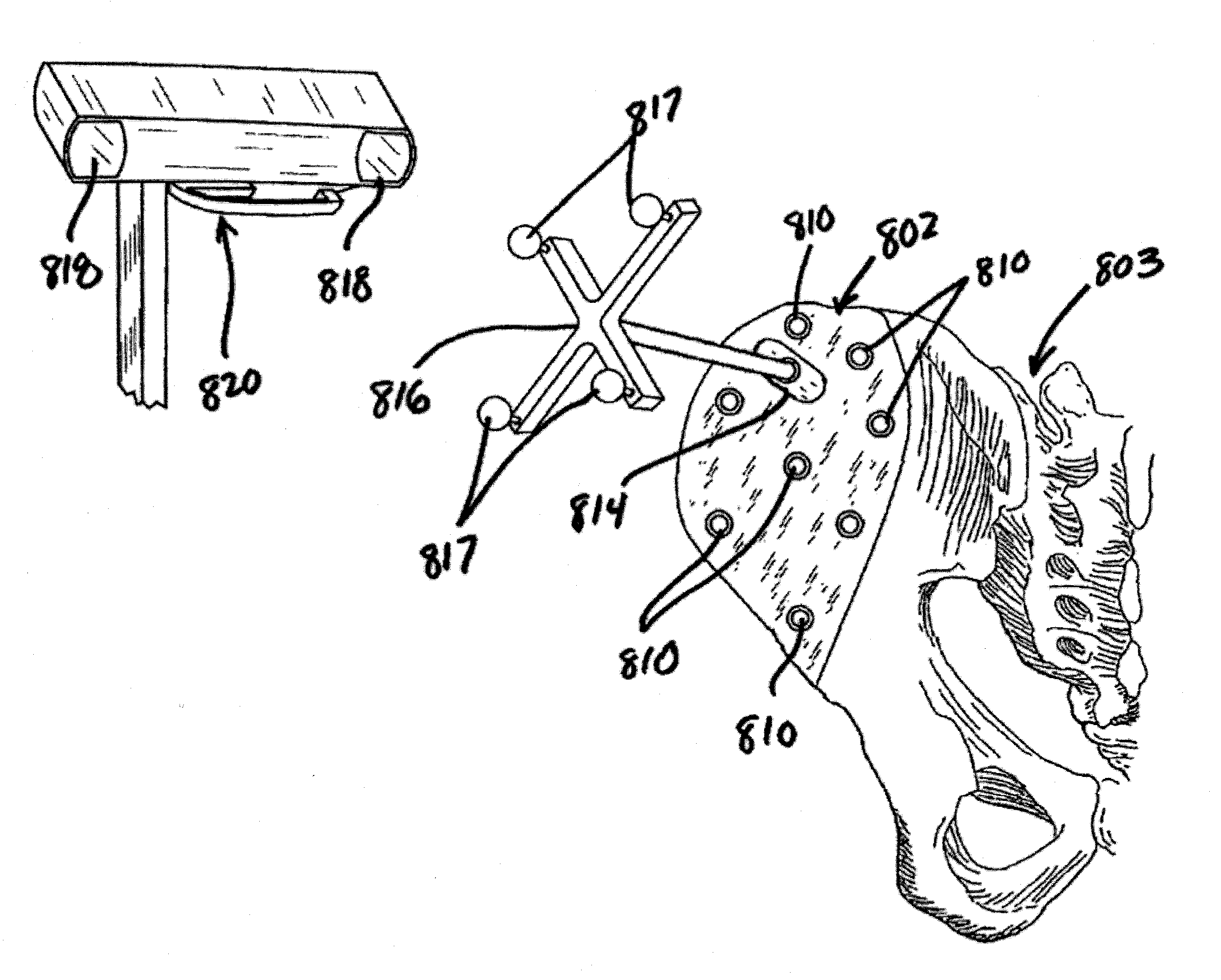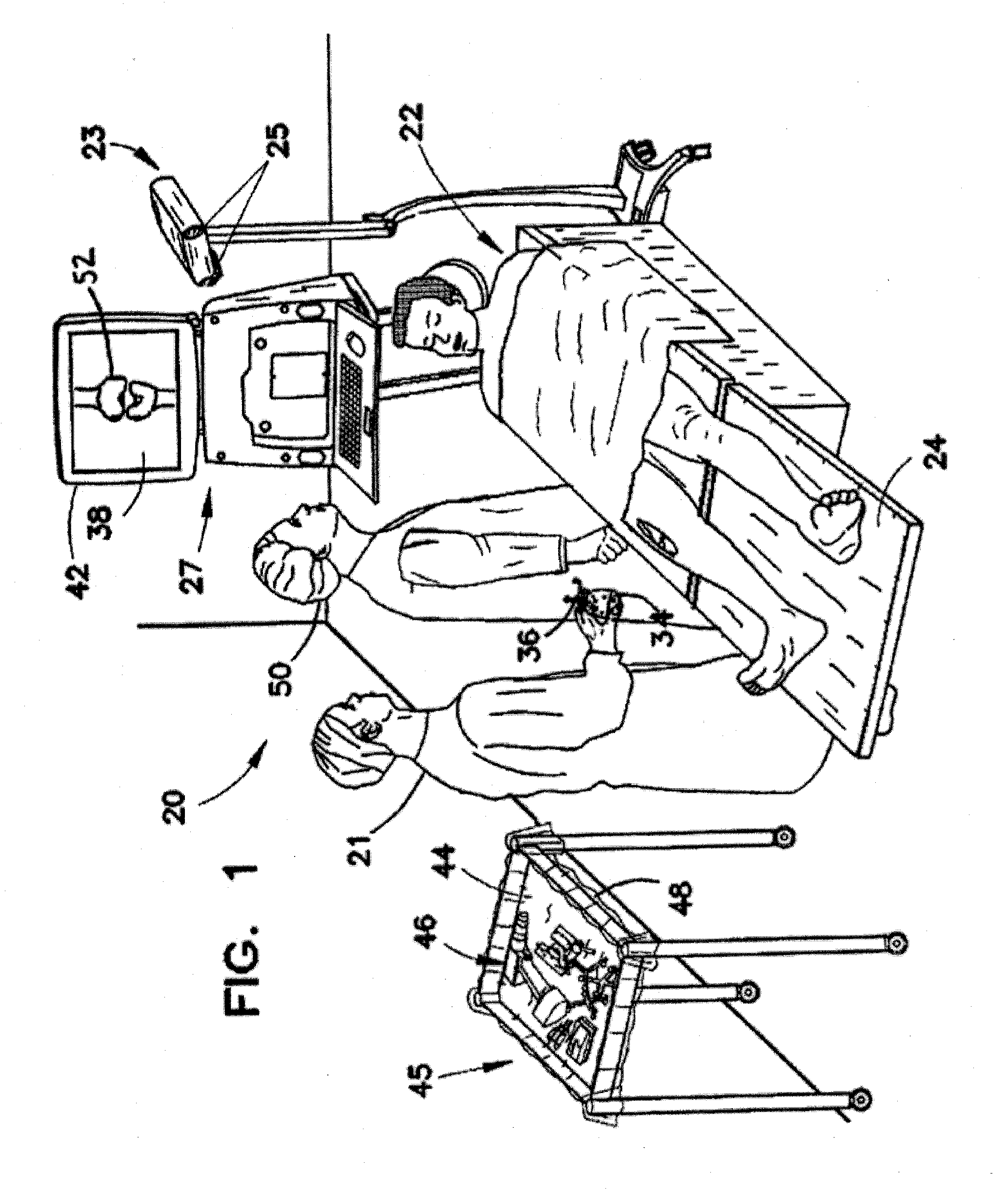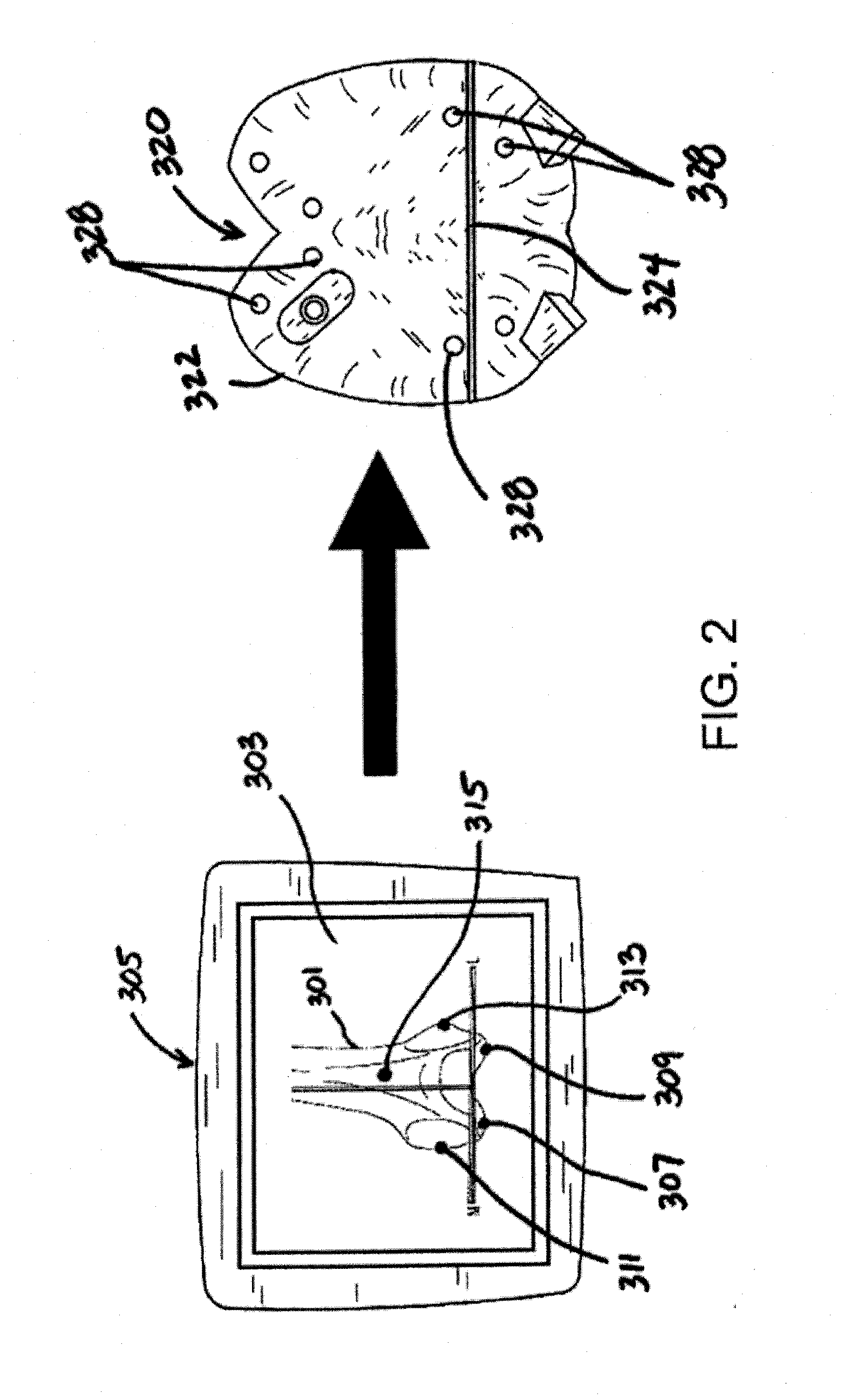Patient-matched surgical component and methods of use
a technology of surgical components and patient matching, applied in the field of surgical navigation, can solve the problems of time-consuming process, and achieve the effect of reducing or even eliminating the need for intra-operative registration during the surgical procedur
- Summary
- Abstract
- Description
- Claims
- Application Information
AI Technical Summary
Benefits of technology
Problems solved by technology
Method used
Image
Examples
Embodiment Construction
[0024]The embodiments of the present teachings described below are not intended to be exhaustive or to limit the invention to the precise forms disclosed in the following detailed description. Rather, the embodiments are chosen and described so that others skilled in the art may appreciate and understand the principles and practices of the present teachings.
[0025]FIG. 1 shows a perspective view of an operating room with surgical navigation system 20. Surgeon 21 is aided by surgical navigation system 20 in performing knee arthroplasty, also known as knee replacement surgery, on patient 22 shown lying on operating table 24. Surgical navigation system 20 has a tracking system that locates arrays and tracks them in real-time. To accomplish this, the surgical navigation system includes optical locator 23, which has two CCD (charge couple device) cameras 25 that detect the positions of the arrays in space by using triangulation methods. The relative location of the tracked arrays, includi...
PUM
 Login to View More
Login to View More Abstract
Description
Claims
Application Information
 Login to View More
Login to View More - R&D
- Intellectual Property
- Life Sciences
- Materials
- Tech Scout
- Unparalleled Data Quality
- Higher Quality Content
- 60% Fewer Hallucinations
Browse by: Latest US Patents, China's latest patents, Technical Efficacy Thesaurus, Application Domain, Technology Topic, Popular Technical Reports.
© 2025 PatSnap. All rights reserved.Legal|Privacy policy|Modern Slavery Act Transparency Statement|Sitemap|About US| Contact US: help@patsnap.com



